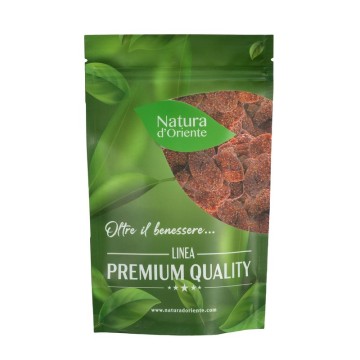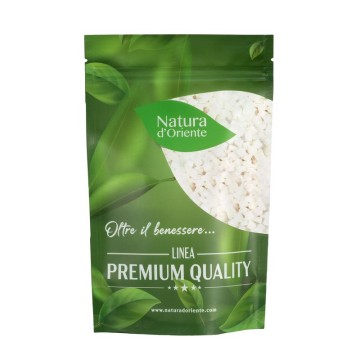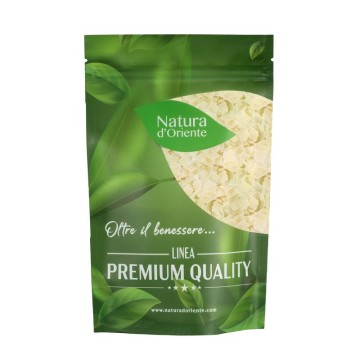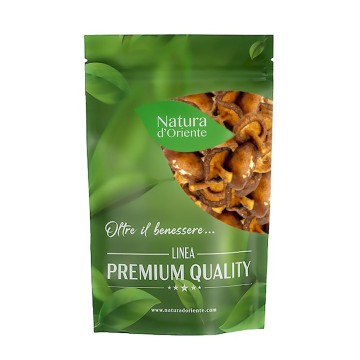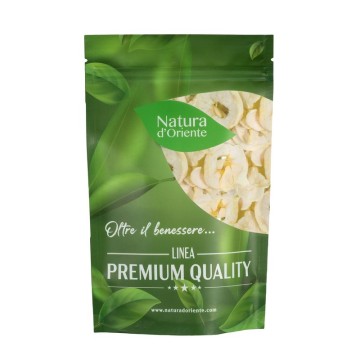Dehydrated melon
A fruit with excellent qualities for both taste and well-being. The melon has an intoxicating aroma, a sweet taste and also several beneficial properties.
In its version of dried melon, it still brings benefits to the human body, and the same delicacy ...
Dehydrated melon: properties and benefits
The melon usually grows in summer and when it matures it releases its scent. Coming from the pumpkin family, it is actually a false round berry, very popular and widespread everywhere. The important problem for those who love this fruit is its absence during the winter season.
For this reason, the dried melon version is very popular! 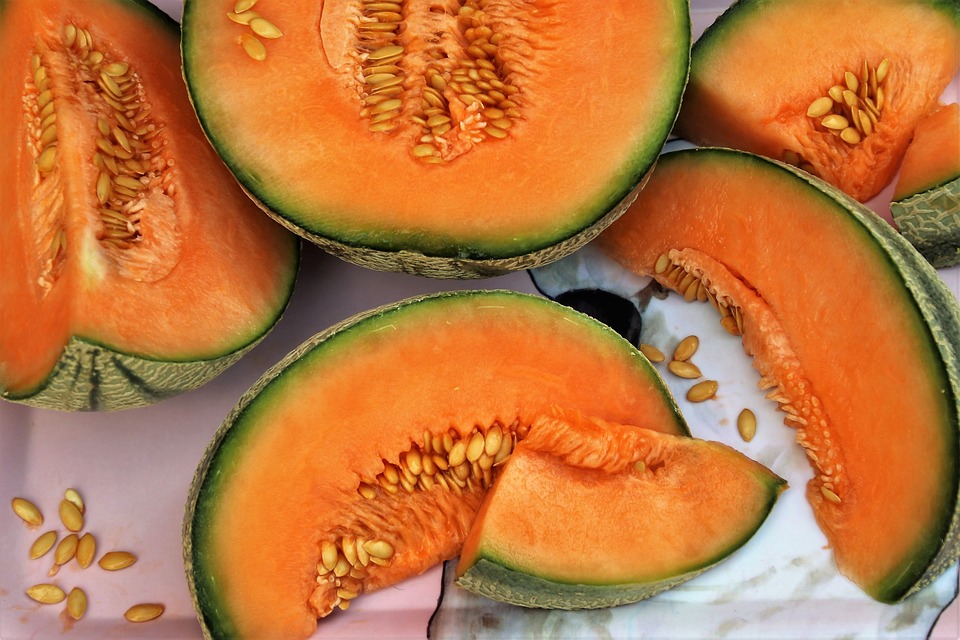 I The taste of dehydrated melons is slightly different from the taste of fresh berries, but its beneficial properties are intact.
I The taste of dehydrated melons is slightly different from the taste of fresh berries, but its beneficial properties are intact.
It is extremely rich in nutrients : mineral salts, vitamins A, C, D, PP, beta-carotene, riboflavin, pyridoxine, folic acid, iron, sugars, proteins and fibers. Furthermore, folic acid in the composition of the product can be valuable for women during pregnancy and menopause.
The beta-carotene , which is in the composition of the melon, is known for its beneficial effects on the skin, even for ailments such as acne or dark spots; it acts beneficially on the hair, strengthens the nails, and helps maintain a tan in the summer - as well as protecting the skin before exposure to the sun. Melon is also rich in vitamins A, B and C. Contains a large dose of vitamin B1 (thiamine), B3 (niacin), B5 (pantothenic) and B6 (pyridoxine). In addition, it contains vitamins E and K, as well as rich amounts of sodium, potassium, magnesium, iron, copper and alpha-beta carotene.
The main health benefits of melon are due to these substances, and especially melon is a fruit useful for protecting eye health, thanks to beta-carotene which becomes vitamin A in our body. It can have a beneficial effect on the immune system and as an antioxidant food, given the presence of vitamin C .
Being rich in potassium, cantaloupe protects cardiovascular health and can help us fight stress and anxiety. Dehydrated melon also has some laxative properties, and contains fiber that helps eliminate the feeling of hunger naturally. In addition, dried, it does not cause bloating by taking up too much space in the stomach, like some other foods that contain too much fiber.
Origins and History of cultivation
The origins of the melon probably date back to the hot countries of Africa and Asia, where this plant of the Cucurbitaceae family (such as watermelon and cucumber) was born. According to some scholars, it could also come from ancient Persia.
Known and appreciated already by the ancient Egyptians, who cultivated it along the banks of the Nile, it was exported to the Mediterranean basin by their trade, around the fifth century. BC, and according to some findings in Sardinia they arrived during the Bronze Age (about 1300 BC). It arrived in the rest of Italy during the dominion of the Roman Empire, and is mentioned by Pliny (1st century AD) in his book Naturalis Historia. In the early Middle Ages, it had already spread throughout the Mediterranean basin, and since then it has been grown in many warm climate regions, although some varieties can grow at lower temperatures.
They arrived in America already in the Renaissance, and since then they have been grown in different countries around the world, where the climate allows it. Most melons are sweet and eaten fresh, although some varieties can be made into preserves or brine, or dried as in the case of dehydrated melons.
Plant and Fruit
Melon comes from the Cucumis melo plant, a climber of the pumpkin family (Cucurbitaceae) which also includes watermelon, and is grown for its edible fruit.
Melons bear large round or lobed leaves and unisexual yellow flowers. Botanically, the fruits are a type of berry known as a peponid, and they vary greatly in size, shape, texture, and color. They appear with shades of yellowish, whitish, brown, greenish and longitudinal stripes. The flavor of the pulp can vary depending on the variety. Typically, melons weigh 1-4 kg, and in the cantaloupe and netted melons varieties, when they mature they give off a sweet fruity smell.
Other varieties are ripe when they turn yellow. They are those called winter melons because they ripen late and ripen slowly in the deposits, for many weeks, becoming softer but not sweeter. At level denvironmental requirements, the melon usually germinates 8-10 days after sowing, at a temperature between 25 and 28 ° C, and the minimum tolerated is 15 ° C. The timing of its growth also depends above all on the ambient temperature - a temperate-warm climate. In Italy, this plant is grown throughout the summer.
Nutritional values of dehydrated melon
Melon is a low calorie fruit, with about 360 Kcal per 100 grams. It is low in fat (0%), but contains fiber, protein, potassium (about 300 mg / 100g), magnesium, calcium, iron and phosphorus.
In addition, it is rich in beneficial substances such as Vitamin B1 - Thiamine (about 0.40 mg / 100 g) and Niacin (about 6 mg / 100 g), vitamin C (32 mg / 100 g), vitamin A Retinol (189 µg / 100 g) and Vitamin A (7169 µg / 100 g), Beta-carotene (2020 µg / 100 g), and Vitamin K (2.5 µg / 100 g). It also contains a good dose of folate (21 µg / 100 g). Compared to fresh fruit, dehydrated fruit loses water and concentrates fiber, sugars, nutrients and minerals, becoming a nutritious snack.
How to consume dehydrated melon in the kitchen or as a snack
Dried melon is a unique delicacy with an exquisite taste, often used in the dried version as a satiating and satiating snack. It can be inserted in salads, on the ice cream top, to prepare desserts and cakes, muffins and cupcakes. In addition, it is very tasty in yogurt, natural drinks and smoothies.
Dried fruit stocks are also often used in cereal mixes, and for some “exotic” recipes because dried melon can give a special flavor to well-known dishes. It is also used in the preparation of tea, to flavor it. Like many dehydrated fruits, melon can be used as a snack for sportsmen, even as an ingredient for the preparation of energy bars.
Dehydrated melon: side effects and contraindications
There are no particular contraindications to taking this dried fruit, but diabetics are advised to refrain from consuming dried melon too often due to the high level of sugar present. In large doses, the dried melon could cause a laxative action. Furthermore, the low sodium to potassium ratios can lead to imbalances and cramps if melon is taken in large quantities.













 No reward points for this product.
No reward points for this product.
 I The taste of dehydrated melons is slightly different from the taste of fresh berries, but its beneficial properties are intact.
I The taste of dehydrated melons is slightly different from the taste of fresh berries, but its beneficial properties are intact.



